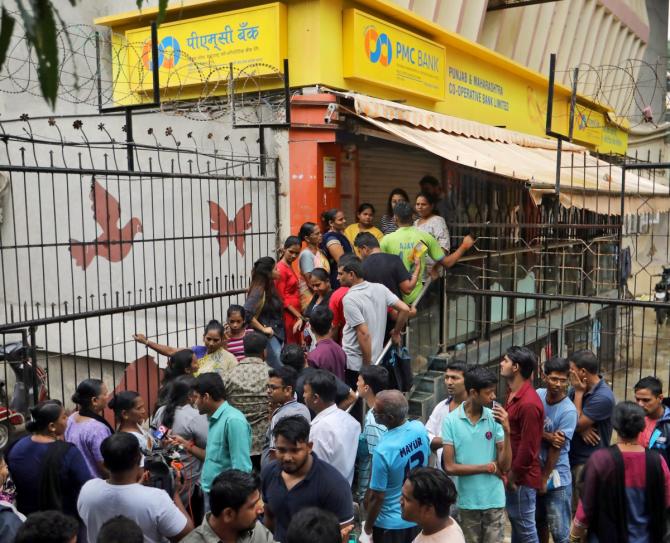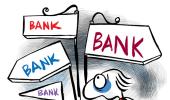The financial sector has been deeply troubled since 2013. It is now in a full-blown crisis, warns Devangshu Datta.

There is a telling sentence in the Reserve Bank of India's latest Financial Stability Report: 'Macro stress tests for credit risk indicate that the Gross Non Performing Assets (GNPA) ratio of all Scheduled Commercial Banks (SCBs) may increase from 8.5 per cent in March 2020 to 12.5 per cent by March 2021 under the baseline scenario; the ratio may escalate to 14.7 per cent under a very severely stressed scenario.'
GNPA is the total quantum of NPAs while net NPAs are NPAs which are not provisioned.
It's likely to be a 'severely stressed scenario', given the economic collapse.
History shows the RBI has consistently underestimated past trends of NPAs.
In a severely stressed scenario, GNPAs may touch 15 per cent, while the baseline is one-third rise.
Given a drop in bank credit in the second half of FY 2019-2020 and a sharper drop in the first four months of 2020-2021, there is no way to write this off easily.
The net interest margin for the banking sector is, at best, around 5.5 per cent. So, a huge amount of provisioning and capital infusion will be required even in best-case scenarios.
The return on the 85 per cent of 'good loans' would not be enough to compensate for the NPAs.
Bank credit outstanding amounts to roughly 72 per cent of GDP. So, GNPAs of 8.5 per cent of assets already equated to 6.1 per cent of GDP by March 2020.
If there's 12.5 per cent GNPA by March 2021, that would be about 9 per cent of GDP.
The high-stress scenario of 14.7 per cent GNPA equates to 10.7 per cent of GDP.
The financial savings of households amounted to just 7.7 per cent of GDP in March 2020. This makes a bailout even harder.
Maintaining capital adequacy will be difficult.
One option is banks subscribing to a special issue of government bonds, which would allow them to use their deposits to buy such a bond issue.
Then, the government would plough the proceeds back into fresh bank equity. Variations of this exercise have been tried many times.
But the sheer scale of the problem makes it hard to see this as even a temporary solution.
In addition, public sector banks (PSBs) are trading at very low valuations and most PSBs have high NPA exposures as well. (So does YES Bank.)
If there are initial public offerings (IPOs) at current valuations, huge tranches of equity would have to be sold.
This would lead to political issues where the government turns minority shareholder. Tapping overseas financing for PSB capital is even less politically acceptable.
The financial sector has been deeply troubled since 2013. It is now in a full-blown crisis. A financial crisis requires more time to resolve than a crisis in any other sector.
We've seen this empirically since 2013. It is worse now since the scale is growing and GDP growth has also nosedived.
Self-evidently, the bank crisis is a 'too big to fail' scenario. So some sort of bailout will surely be implemented.
But a crisis of this nature could lead to a sudden collapse of investor confidence and that is something traders and investors must be prepared for.
Feature Presentation: Rajesh Alva/Rediff.com












 © 2025
© 2025